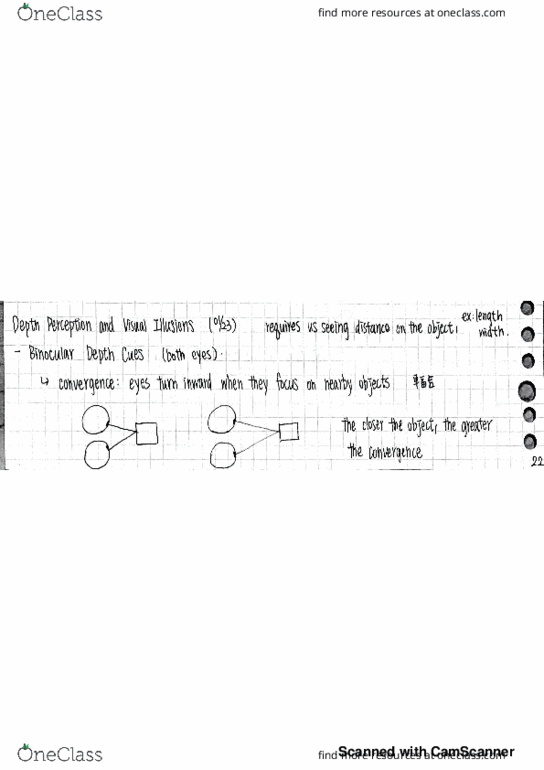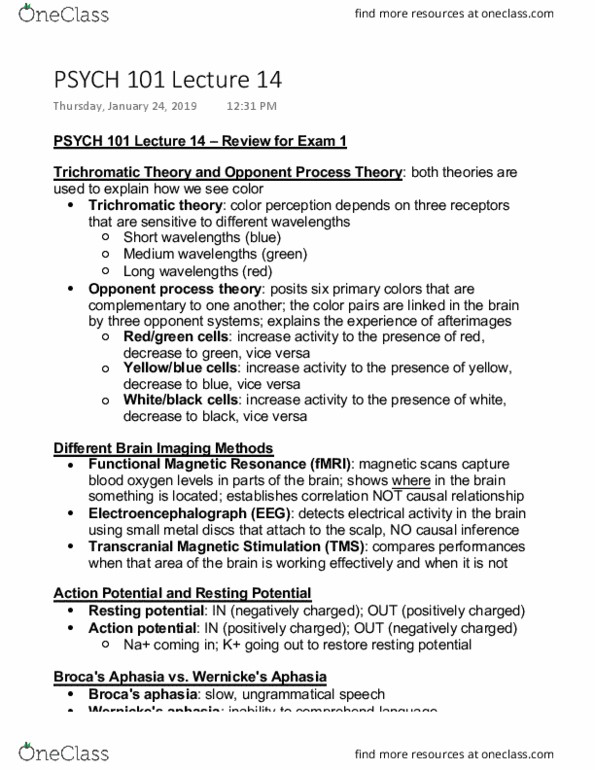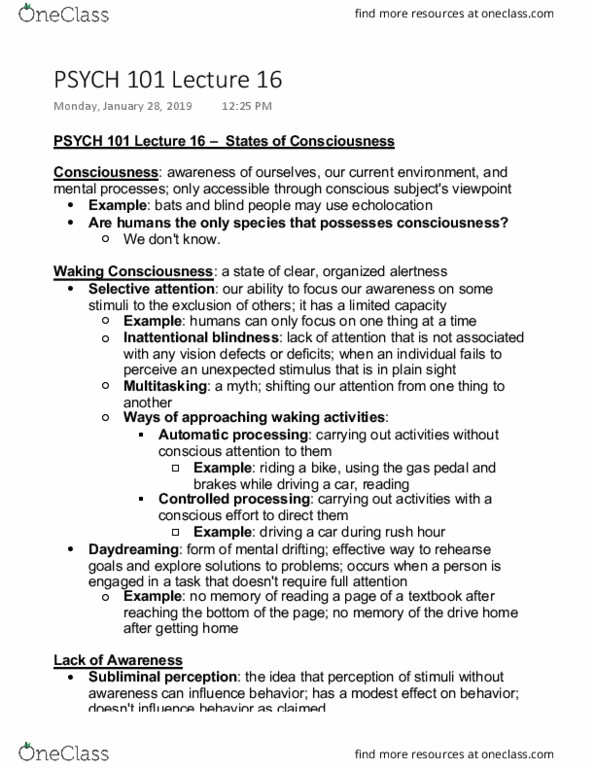PSYCH 101 Lecture Notes - Lecture 14: Transcranial Magnetic Stimulation, Causal Inference, Opponent Process
PSYCH 101 verified notes
14/25View all
Document Summary
Psych 101 lecture 14 review for exam 1. Trichromatic theory and opponent process theory: both theories are used to explain how we see color: trichromatic theory: color perception depends on three receptors that are sensitive to different wavelengths. Long wavelengths (red: opponent process theory: posits six primary colors that are complementary to one another; the color pairs are linked in the brain by three opponent systems; explains the experience of afterimages. Red/green cells: increase activity to the presence of red, decrease to green, vice versa. Yellow/blue cells: increase activity to the presence of yellow, decrease to blue, vice versa. White/black cells: increase activity to the presence of white, decrease to black, vice versa. Action potential and resting potential: resting potential: in (negatively charged); out (positively charged, action potential: in (positively charged); out (negatively charged) Na+ coming in; k+ going out to restore resting potential.




